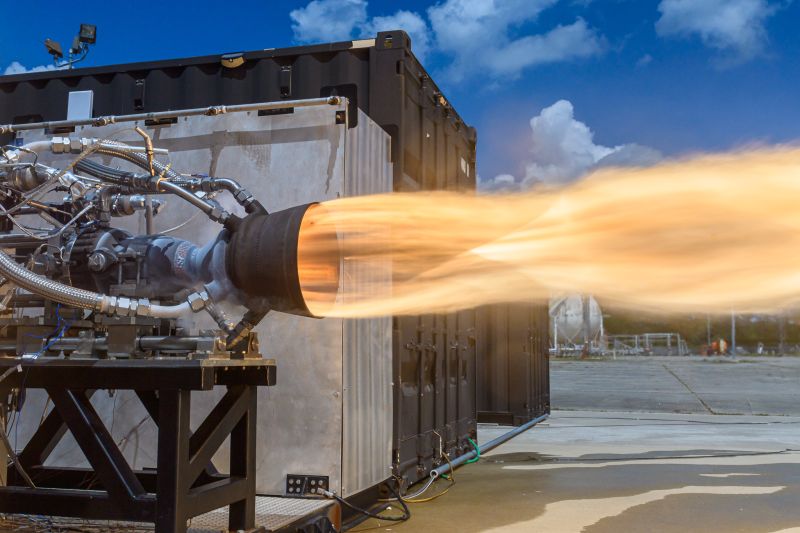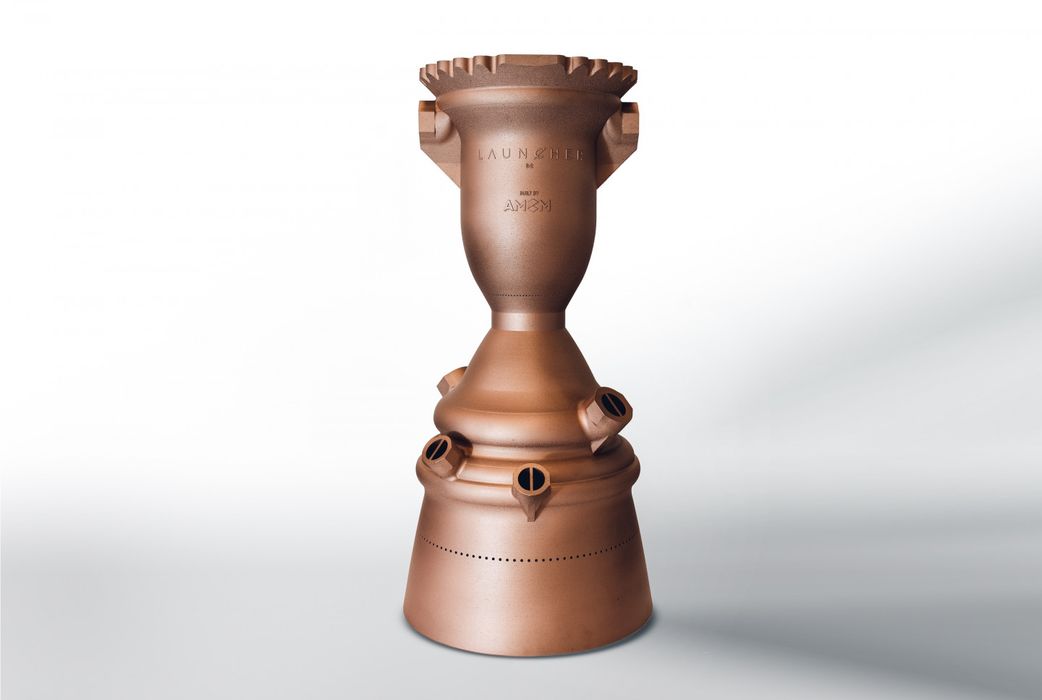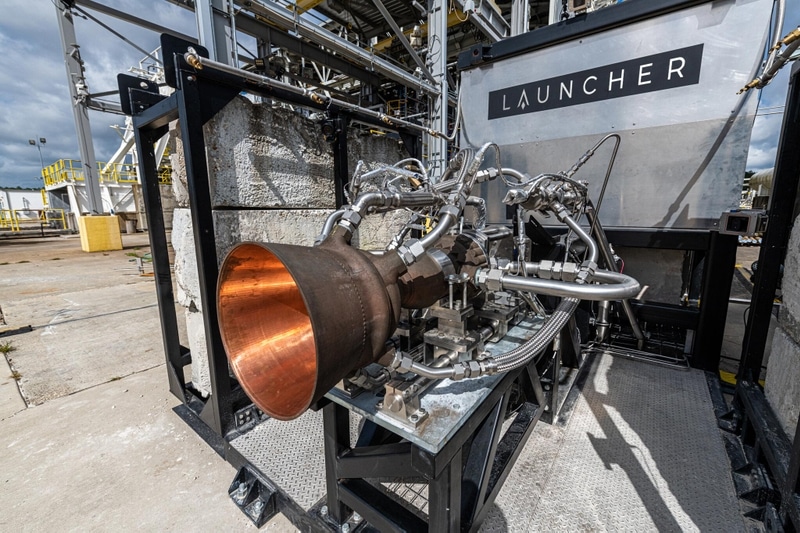It’s a whirlwind ride for up-and-coming startups in the booming private space industry. According to a Space Capital report, there have been $252.9 billion in cumulative global equity investments into 1,694 different companies in the space economy since 2021. 2021 alone was a record year for space investment, with $46.3 billion dedicated to all space-technology activity. If that weren’t enough, these next few years would witness several inaugural flights from newcomers, so the pressure is on for many of these startups to make their way into a very heated new space race.
One of the startups in this competitive domain has been leveraging 3D printing technology for its rockets since its inception. Launcher, a California-headquartered small launch vehicle manufacturer, is developing a high-performance kerosene and liquid oxygen or kerolox rocket engine (code-named E-2) by partnering with additive manufacturing giants Velo3D and AMCM.
Just weeks after Launcher’s 3D-printed E-2 engine achieved full thrust for the first time in a performance boost test at NASA’s Stennis Space Center in Mississippi, the company announced a new $1.7 million contract from the U.S. Space Force, the newest branch of the U.S. military. The Tactical Funding Increase (TACFI) award is designed to help bridge the capability gap between current Small Business Innovation Research (SBIR) Phase II efforts and Phase III scaling efforts, facilitating the delivery of strategic capabilities for the Air Force.
E-2 is a closed cycle engine and its high-pressure (310 bar), high-efficiency, single-shaft turbopump development is moving forward in parallel. In March 2022, Launcher successfully tested E-2’s turbine and liquid oxygen pump in boost mode at 130% nominal flow, while photos of its full-scale thrust test at Stennis were posted on social media.
Described by Launcher Head of Manufacturing Tim Berry as the highest performance kerolox engine chamber ever made in the U.S., E-2 put up some impressive numbers in the latest test trip, demonstrating about 22,046 pound-feet of thrust (roughly ten metric tons of thrust) utilizing LOX/Kerosene at 100 bar of combustion strain.
Berry said that “at 290s of ISP (specific impulse) sea-level/327s vacuum (non-vac optimized) and 96.5% C* efficiency, we are getting very close to repeating our trademark kerolox that started with the E1 engine.”
On the AM side, the thrust chamber for this unit is uniquely liquid oxygen cooled, and 3D printed as a single piece on AMCM’s M4K platform using copper alloy, which the company stated: “performed exceptionally well.” Since copper is ideal for removing heat from the running engine as it is an excellent conductor, building the combustion chamber in one part minimizes weight, has no bolts to hold the parts together, and no seams to fail. On the other hand, the E-2’s co-axial swirl injector was fabricated on Velo3D’s Sapphire metal AM system and drives combustion efficiency above 97.5%.
A single E-2 closed-cycle 3D-printed, high-performance liquid rocket engine will power the Launcher Light launch vehicle to orbit in 2024 during its first test flight. The liquid-fueled rocket will measure 15.2 meters long and 1.1 in diameter and carry 150 kg and 105 kg payloads into low Earth orbit (LEO) and sun-synchronous orbit (SSO), respectively. The entire assembled Launcher Light is ground transportable and will operate from globally dispersed launch sites with minimal to no permanent infrastructure.
As the latest milestone for Launcher, the U.S. Space Force funds will help further develop its E-2 liquid rocket engine, which the Space Force considers a priority.
In a memorandum from June 2021, the military branch stated that “Launcher’s high-performance engine design materially increases a rocket’s payload capacity by consuming less propellant while generating the same thrust. As a result, Launcher’s E-2 liquid rocket engine also has the potential to significantly reduce the price to deliver small satellites to orbit on dedicated small launch vehicles, which is a key capability and priority for the Space Force.”
Awarded on May 18, 2022, this contract provides Launcher with additional funding to advance and accelerate the development of Launcher’s E-2 engine, including full-duration testing of the E-2 turbopump in-flight configuration housings with the two-stage fuel pump at Stennis Space Center and long-duration testing of the E-2 combustion chamber, also at Stennis.
Launcher is the first small launch company to use 3D printed copper alloy and leads in small launch 3D printed technology with its development of the first large format (100 x 45 x 45 cm) custom 3D printer in partnership with AMCM.
In parallel, the startup is working with Velo3D on 3D printed metal tanks, both as a structure and to hold propellant, for its Orbiter spacecraft, a satellite transfer vehicle and hosted payload platform scheduled to reach orbit in October 2022 on SpaceX’s Falcon 9 Transporter-6 rideshare launch. The duo uses optimal design without needing DfAM to complete prints of Orbiter’s 22-liter tanks, matching Sapphire’s build volume.
Both the Launcher Light and Orbiter are two major developments that use 3D manufacturing, with the mission to expand access to space. With a satellite launch market expected to grow from $8 billion today to $38 billion in 2030, Launcher is betting on 3D printing technologies to advance its rocket fabrication capabilities. At its 24,000-square-foot office and factory floor in Hawthorne, it boasts an in-house team of welders, machinists, technicians, and 3D printing machines from EOS, AMCM, Velo3D, and Solukon, enough to develop and produce the first Orbiters and Launcher Light vehicles.
Subscribe to Our Email Newsletter
Stay up-to-date on all the latest news from the 3D printing industry and receive information and offers from third party vendors.
You May Also Like
Further Understanding of 3D Printing Design at ADDITIV Design World
ADDITIV is back once again! This time, the virtual platform for additive manufacturing will be holding the first-ever edition of ADDITIV Design World on May 23rd from 9:00 AM –...
3D Printer Maker EVO-tech Reborn as NEVO3D — Once More With Feeling
EVO-tech was a 3D printing service and original equipment manufacturer established in 2013 and based in Schörfling am Attersee, Austria. The company produced high-quality material extrusion systems featuring linear bearings,...
3D Systems Brings 3D Printed PEEK Cranial Implant to the U.S. with FDA Clearance
For more than 10 years, 3D Systems (NYSE:DDD) has worked hand-in-hand with surgeons to plan over 150,000 patient-specific cases, and develop more than two million instruments and implants from its...
CDFAM Returns to Berlin for Second Annual Symposium
The second CDFAM Computational Design Symposium is scheduled for May 7-8, 2024, in Berlin, and will convene leading experts in computational design across all scales. Building upon the first event...


































